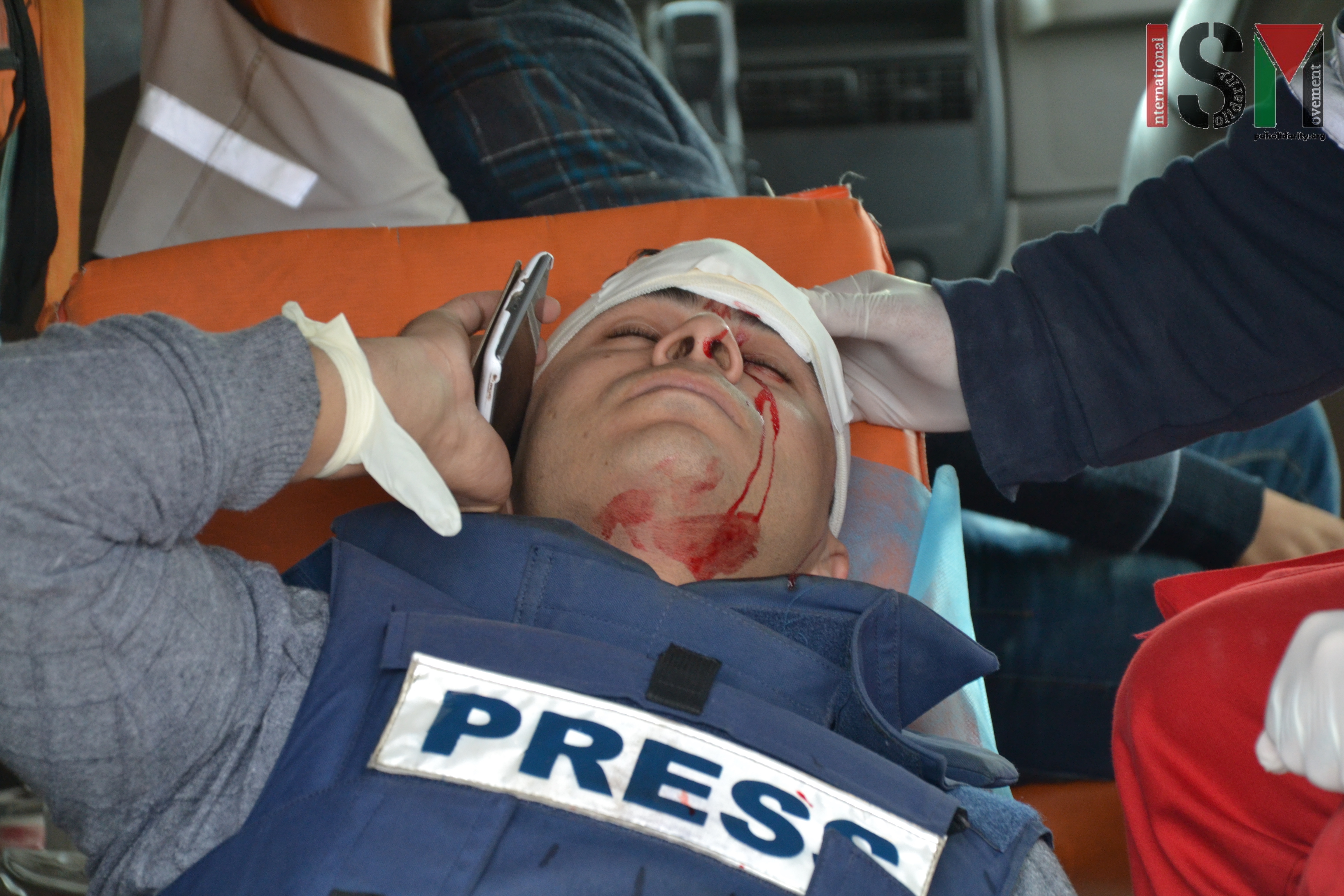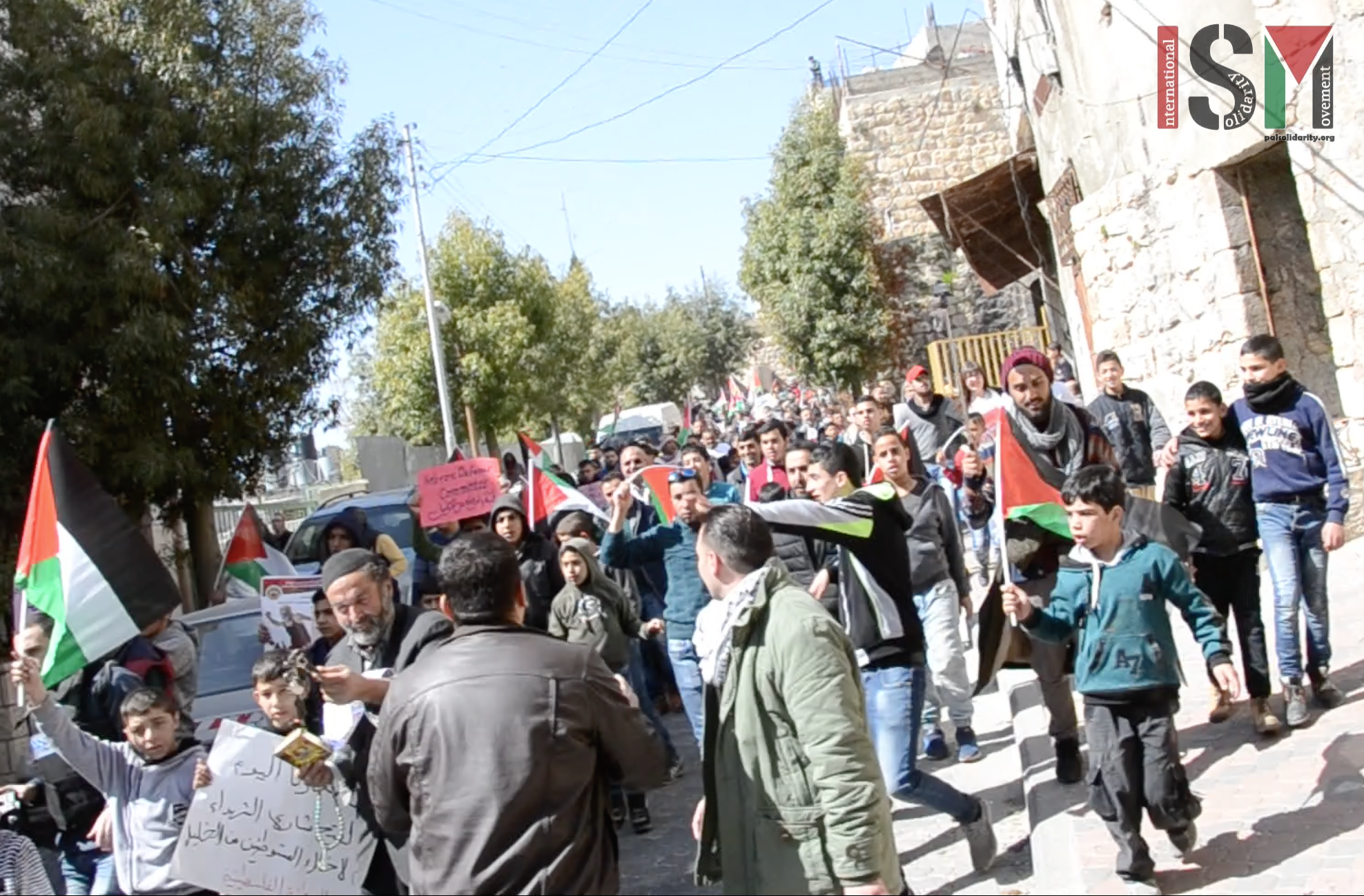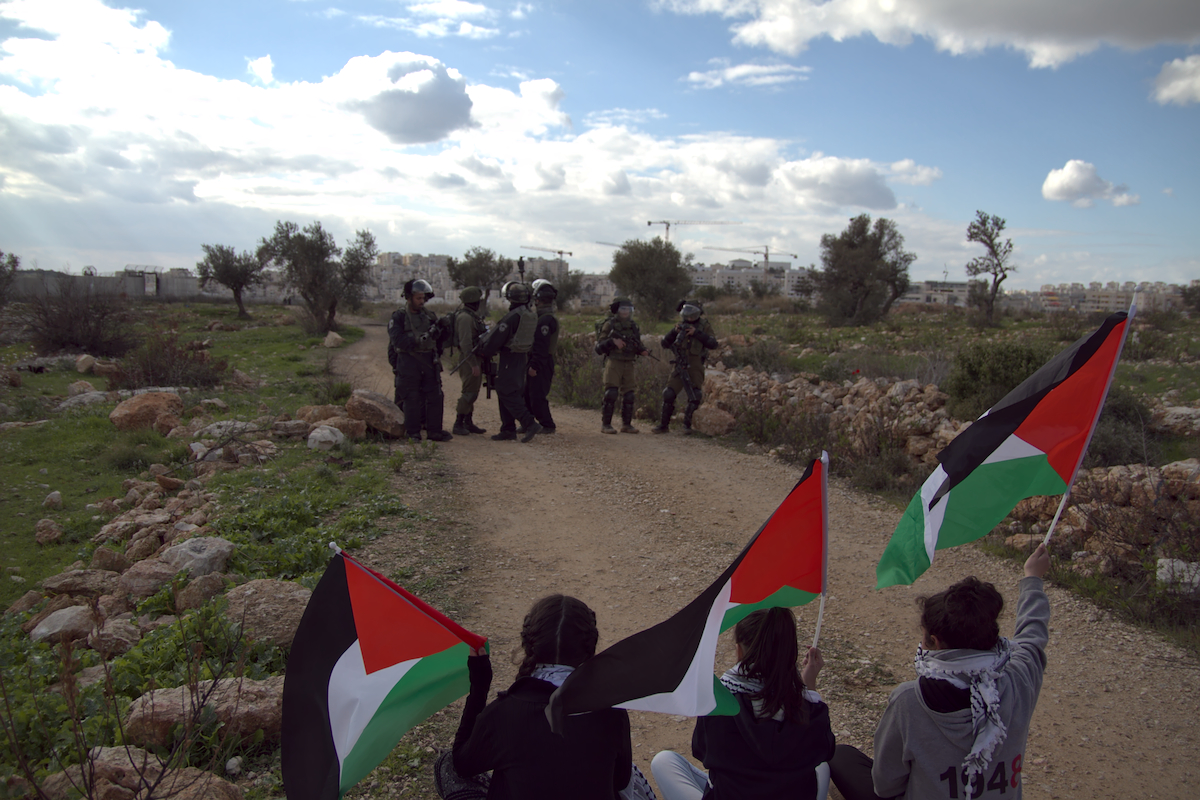Tag: Rubber-coated steel bullets
-
Kafr Qaddoum: Israeli forces shoot Palestinian journalist
3th of March, 2017 | Popular Resistance Committee of Kafr Qaddum | Occupied Palestine Today, at the weekly Friday protest in Kafr Qaddoum, a large number of Israeli Forces raided the village and fired large amounts of live ammunition, rubber coated steel bullets, stun grenades and teargas at Palestinian protesters. One journalist, from Palestine TV, was…
-
Israeli army attacks peaceful demonstration in Hebron and injures protesters : eye-witness accounts
24th February 2017 | International Solidarity Movement, al-Khalil team | Hebron, occupied Palestine On 24th February several hundred people joined together for a demonstration in al-Khalil (Hebron) in occupied Palestine. Palestinians, Israelis and international activists protested together against the occupation of Shuhada Street and Tel Rumeida in the heart of the city, closed by the military…
-
12th anniversary of the popular resistance in Bil’in
18th of February, 2017 | International Solidarity Movement, Ramallah team | Bil’in, Occupied Palestine The 17th of February marked the 12th anniversary of the popular resistance of the people of Bil’in against illegal Israeli settlements and the apartheid wall. Throughout these 12 years there have been protests every week by the people of the village,…



